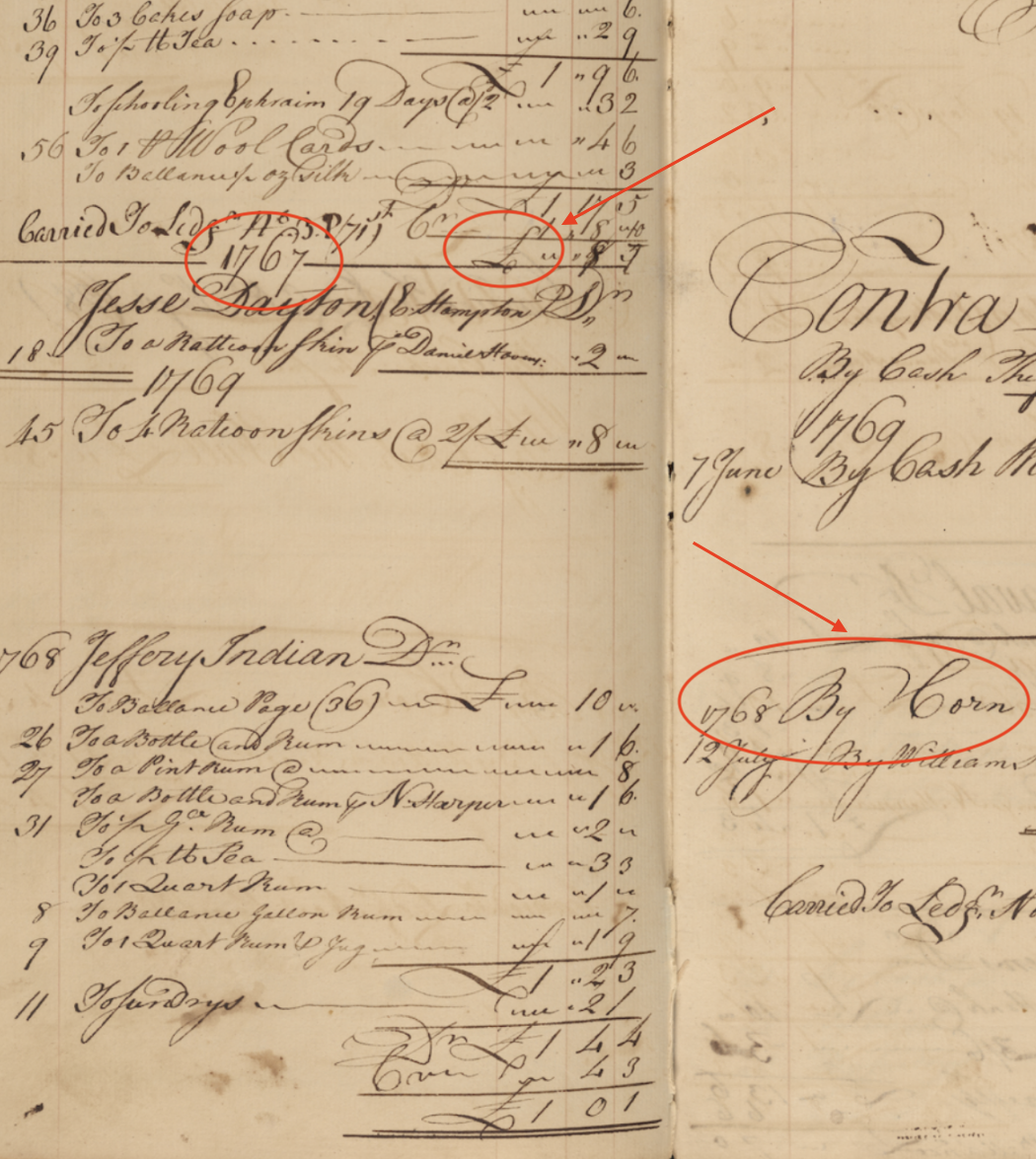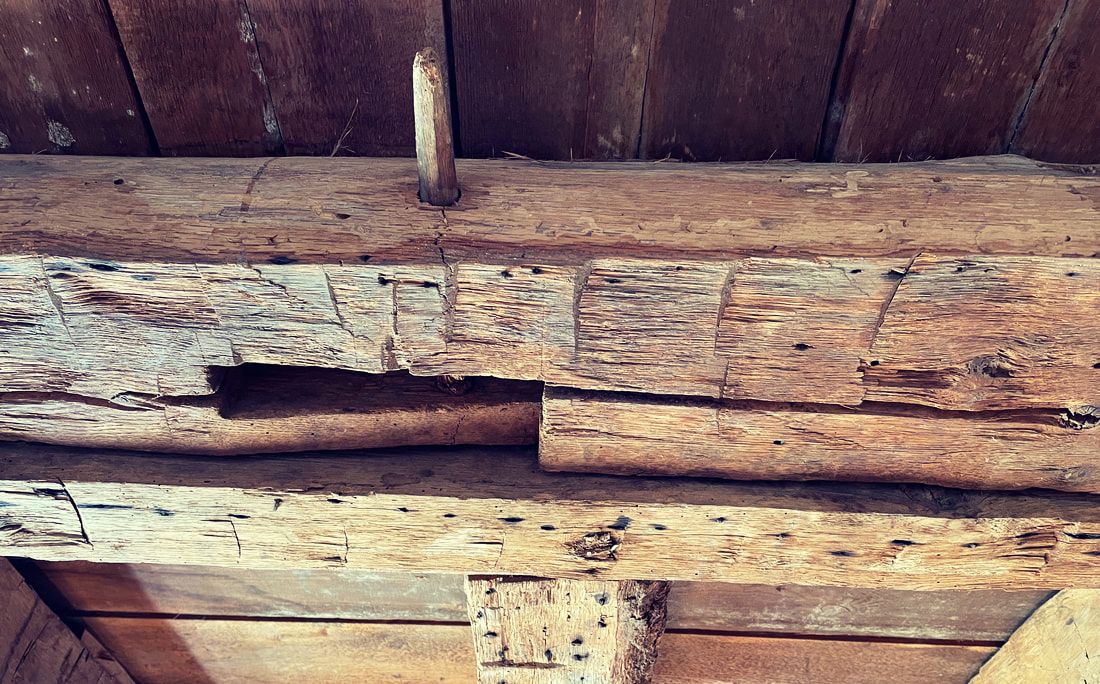8. Tavern Room
Over the years, this room was used variously as a tap room, a dry goods store, a schoolhouse, a post office, and a meeting place for the 23 families on the island. Because this room features mortice-and-tendon construction (that is, the beams are not nailed together), it is clear that this room was added to the house after 1742. (The original outside wall is visible above the door frame.) The beams are hand-hewn, that is, cut all the way around, not from a saw mill.
Over the years, this room was used variously as a tap room, a dry goods store, a schoolhouse, a post office, and a meeting place for the 23 families on the island. Because this room features mortice-and-tendon construction (that is, the beams are not nailed together), it is clear that this room was added to the house after 1742. (The original outside wall is visible above the door frame.) The beams are hand-hewn, that is, cut all the way around, not from a saw mill.
This is a ledger entry from 1767 for the store that was run out of this house. There are two Havens store ledgers in the archives. Because it was before the American Revolution, the pound (“£” ) rather than the dollar (“$”) was used as currency. However, local people also traded goods, like “Jeffrey”, a Native American man, who paid “by corn.”
(Proceed to the next room.)
 Page from the Havens Ledger, 1760s
Page from the Havens Ledger, 1760s
